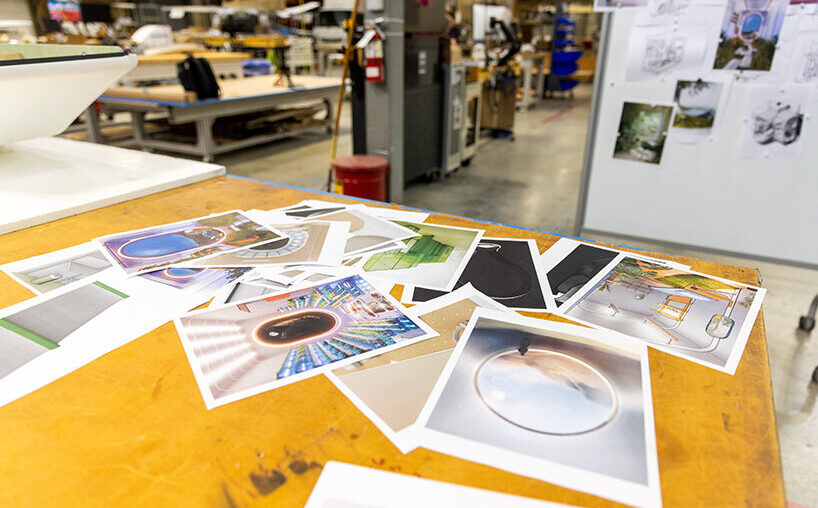DESIGNBOOM INTERVIEWS TEAGUE ON THEIR RECENT IF DESIGN AWARD WINS
Teague reaffirms its commitment to enhancing the human experience, whether traversing the landscapes of Earth or exploring the Moon. Roam America and Lunar Habitat, both honored with an iF DESIGN AWARD in 2024, push the boundaries of creativity and ignite the imagination about the future of travel and human habitation. During designboom’s visit to the design consultancy’s Seattle studio, we had the opportunity to interview Nick Ross, Principal Industrial Designer at Teague, and Sushant Vohra, Senior Industrial Designer at Teague, who led us through the studio’s design philosophy, methodology, and award-winning concepts like the future of design in space, and the evolution of long haul passenger rail in North America.
‘The most unique thing about Teague is everyone’s passion for solving humanity’s most complex problems. It is very field-agnostic, so that could manifest into designing the future of transportation, figuring out life and design in space, or simply a delightful physical or digital experience. Even though we’ve been around for almost a century, we keep asking ourselves: why hasn’t design penetrated every industry? We see design as a massive force that can push businesses, and reimagine the future of humanity,’ says Sushant Vohra, Senior Industrial Designer at Teague during designboom’s studio visit interview series to celebrate iF DESIGN AWARD 2024 winners.
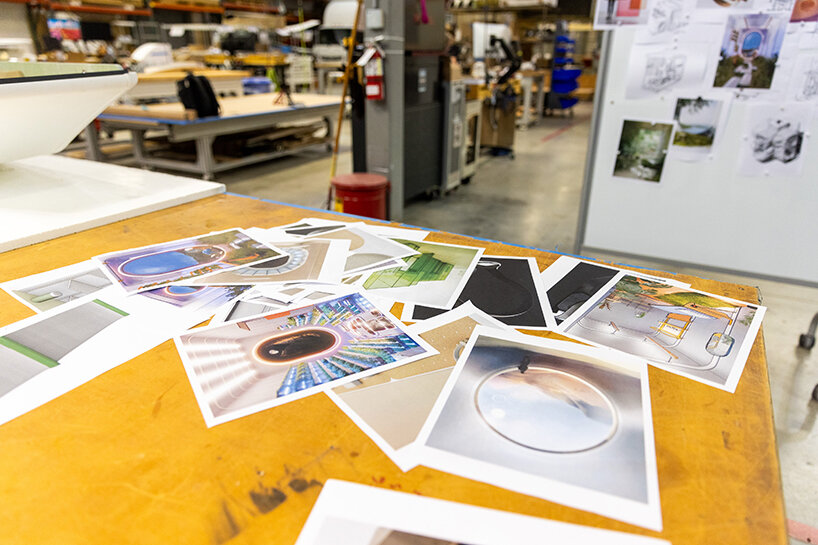
designboom visited Teague’s workshop in Seattle, Washington, as part of a studio visit series with iF DESIGN AWARD 2024 winners
images © designboom
A LEAP FROM PASSENGER RAIL ‘ROAM AMERICA’ TO A ‘LUNAR HABITAT’
Founded in 1926, Teague has collaborated with some of the world’s largest companies to create iconic projects in aviation, technology, and consumer goods. During our visit and interview with the studio, we spoke with Nick Ross, Principal Industrial Designer, and Sushant Vohra, Senior Industrial Designer, who were instrumental in developing the two iF DESIGN AWARD- winning concepts: Roam America and Lunar Habitat. The Seattle-based design consultancy’s recognition by the Award platform – and its jury of top peers in the creative community – celebrates their efforts to create thoughtful, human-focused solutions. It further gives the studio validation that their efforts to improve human experiences, no matter how conceptual, can be catalysts for future innovation.
‘For us, applying to the iF DESIGN AWARD is crucial because it enables us to connect better with the design community and get validation from industry peers and designers. As a result of that, the recognition boosts morale, helps us level up our craft, and find opportunities where we can innovate and inspire ourselves,’ says Vohra.
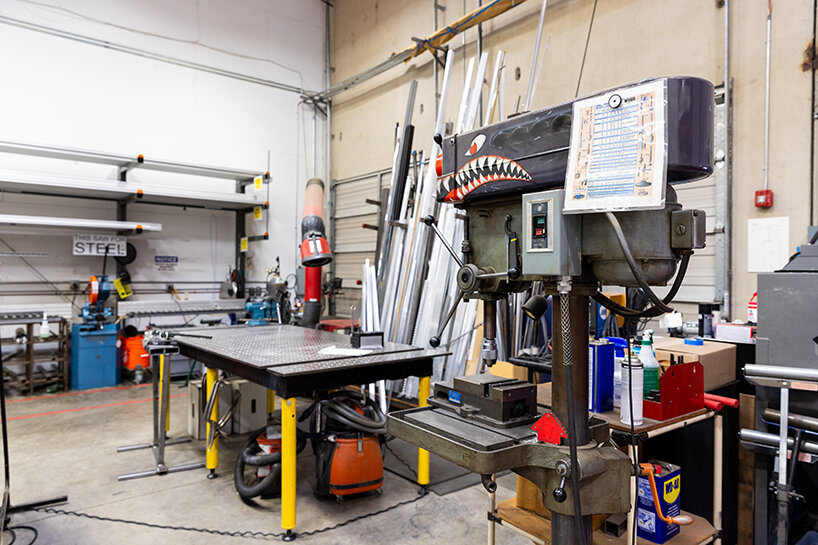
founded in 1926, Teague designs to improve human experiences
CONNECTING COMMUNITIES WITH ‘ROAM AMERICA’
Roam America reimagines rail travel in the United States with inclusivity, accessibility, and the evolving needs of modern travelers. By focusing on a slower, more intentional travel experience, Teague’s design invites travelers onboard and onto an app to immerse themselves in the rich tapestry of communities and cultures, allowing them to work, engage in activities, or relax while en route. The project was inspired by Teague designer’s experiences with both the ‘great American roadtrip’ and the Overseas Experience (OE) from New Zealand, two traditions that encourage travelers to explore and connect with regional cultures, local cuisine, events, and activities.
‘A lot of the inspiration behind Roam originated from this concept in New Zealand called the Overseas Experience (OE). More often than not, you go over to Europe, and travel from country to country, dabbling and experiencing a unique array of cultures and experiences that often shape your future,’ explains Nick Ross, Principal Industrial Designer at Teague. ‘Roam tries to capture this concept in North America, encouraging people to engage with the communities across the different states.’
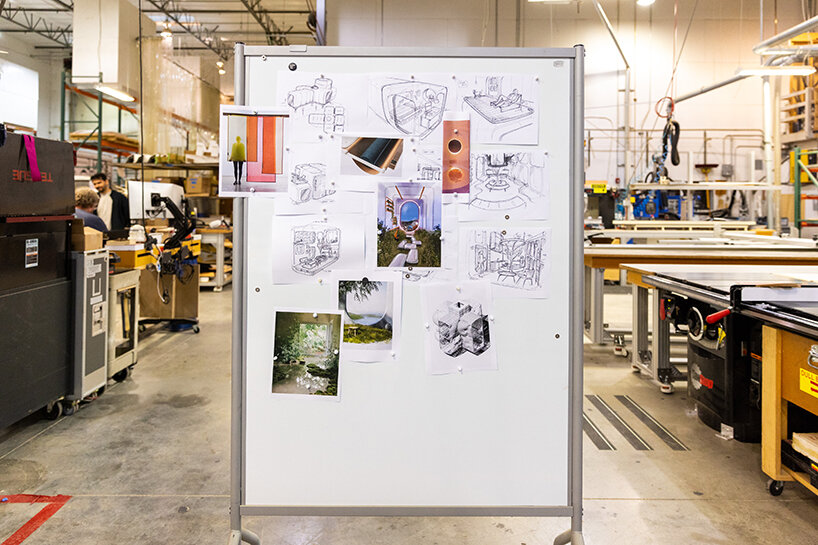
Roam America and Lunar Habitat, both honored with an iF DESIGN AWARD in 2024, explore the landscapes of Earth and the Moon respectively
Roam America’s modular and flexible design transforms the traditional train interior into reconfigurable spaces for work, leisure, and family interaction, breaking away from the rigid seating arrangements of today’s American rail systems. A standout feature is the family-focused car. Imagine a train car that transforms into a playground, blending digital interaction with the ever-changing scenery outside. This thoughtful approach encourages young travelers to engage with their surroundings, fostering curiosity and adventure as they journey through America.
‘We wanted to treat the different cars in a flexible way and really lean into the idea of modularity. One example is the child car, which we wanted to turn into a full playground for children to interact with, both digitally and physically. The idea was to use screens in a very thoughtful way so that children would be able to interact with the environment around them, and as that landscape changes, the experience becomes more and more compelling and unique,’ says Ross.
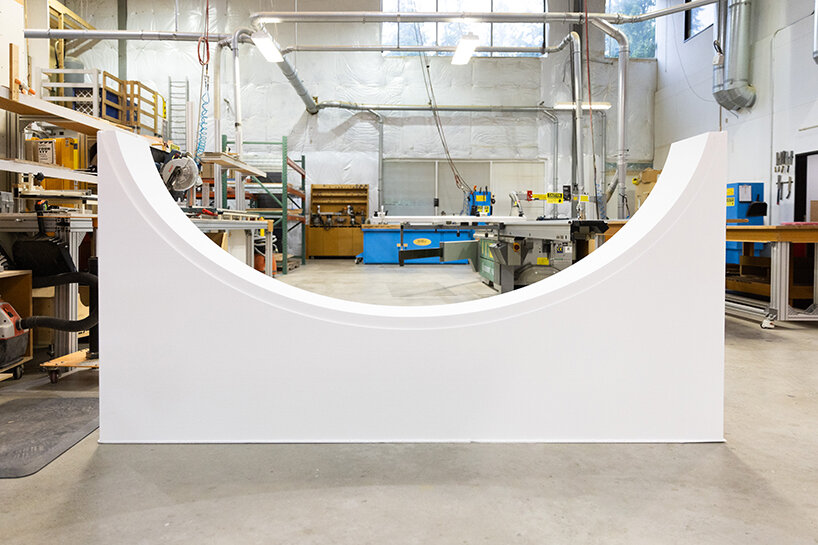
Teague’s approach to design is both intricate and collaborative, reflecting a deep understanding that no two projects are alike
A LEAP TO A ‘LUNAR HABITAT’
‘The concept of people and zones also translates to the Lunar Habitat concept, but in this case, we were designing for an off- world experience,’ says Vohra. ‘What triggered the Lunar project was imagining what life would look like on the moon. I think that’s a far- fetched thought for many, but not for us at Teague. Our solutions are accessible to everybody — people who are heavily trained versus people who are moderately trained. This is something that we believe will enable advancement in the space economy, and boost the speed of development.’
Transitioning from Earth-bound travel to life beyond our planet, Teague’s Lunar Habitat opens up a visionary future for life on the moon. Unlike today’s highly-trained astronauts, future missions will carry a diverse mix of individuals, each needing an environment that harmonizes survival with well-being. As ambitious as it is adaptable, the concept addresses the needs of this pioneering community by designing a modular, inflatable, and scalable structure that optimizes living space, ensures safety, and enhances human connection. The result is an environment that feels as comfortable and supportive as it is functional.
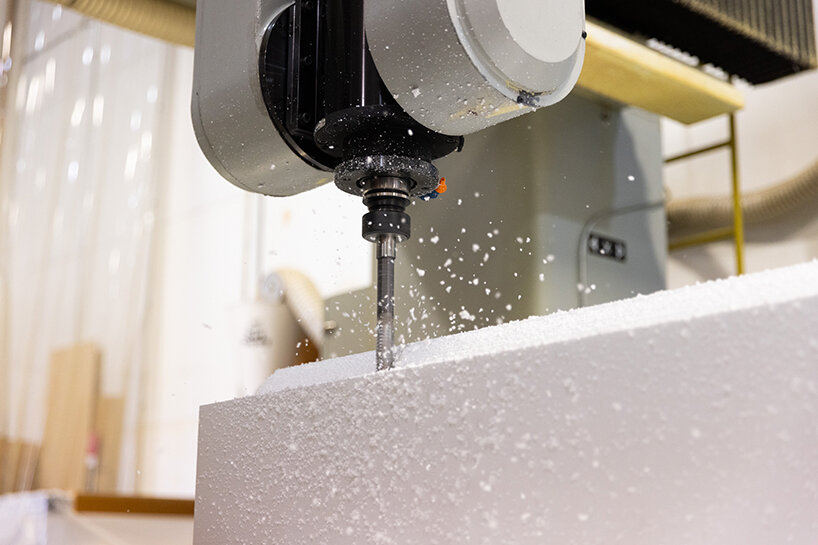
a project’s development process allows the team to tailor their methodologies to the specific client and user, before advancing into more detailed stages like prototyping
Lunar Habitat acknowledges the social and psychological challenges of living in space for extended periods, prioritizing this through the use of innovative architecture, adaptive lighting, and thoughtfully-chosen materials. By focusing on the human experience, the design fosters a sense of community and productivity— – critical for the success of long-term space missions. The modularity ensures adaptability as the needs of lunar inhabitants evolve. At the same time, the architecture promotes personal connection and mental well-being, creating a livable, sustainable environment for people working far from Earth.
‘At its core, both Roam and Lunar represent programs that are designed for the human experience in starkly different terrains. We tried to lean into the different modalities we experience in our day to day life, from moments of relaxation to moments of productivity. This is very true with Lunar as well,’ says Ross.

as ideas evolve, the iterative process allows for continuous refinement and adaptation
TEAGUE’S POWER OF PROTOTYPING: ITERATION AND REFINEMENT
Teague’s approach to design is both intricate and collaborative, reflecting a deep understanding that no two projects are alike. Their development process begins with a thorough exploration of the problem at hand, often involving extensive research and stakeholder engagement. By immersing themselves in the unique context of each idea, the team gathers insights that inform their direction. This foundational phase is crucial, allowing Teague to tailor their methodologies to each client and user, before advancing into more detailed stages like prototyping.
As Vohra puts it, ‘No two projects are the same, and one thing we’ve realized is that our approach needs to be tailor- made for every scenario. We have access to a lot of tools, but the key is finding the right tool for the right job. Teague is really good at finding the language that the stakeholders, clients, and partners want to speak and translate that into sketches, prototypes, and CAD.’
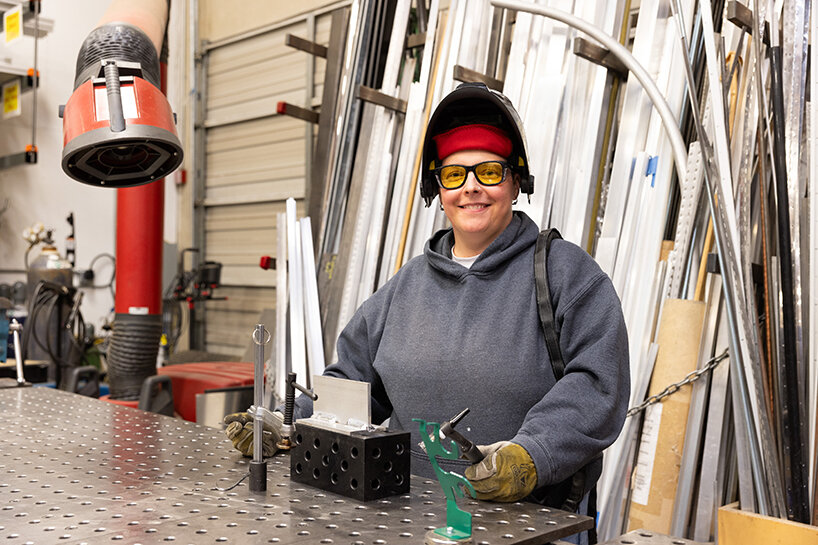
prototypes play a key role for the studio, serving as tangible representations of ideas that can be tested, adjusted, and improved upon
As ideas evolve, the iterative process allows for continuous refinement and adaptation. Prototypes play a key role for Teague, serving as tangible representations of ideas that can be tested, adjusted, and improved upon. Feedback is actively sought and integrated, ensuring that the final product resonates with users and stakeholders alike. This commitment to collaboration and flexibility not only enhances the design outcome, but also cultivates a shared sense of ownership among all participants, making each project and award win a collective achievement.
‘A key part of our iterative process is putting prototypes into people’s hands, enabling them to engage with the design naturally and fully grasp the depth and rigor of the projects in real-world contexts. Prototypes and mockups facilitate this understanding, creating valuable insights that guide refinement and development towards the final version,’ says Ross.
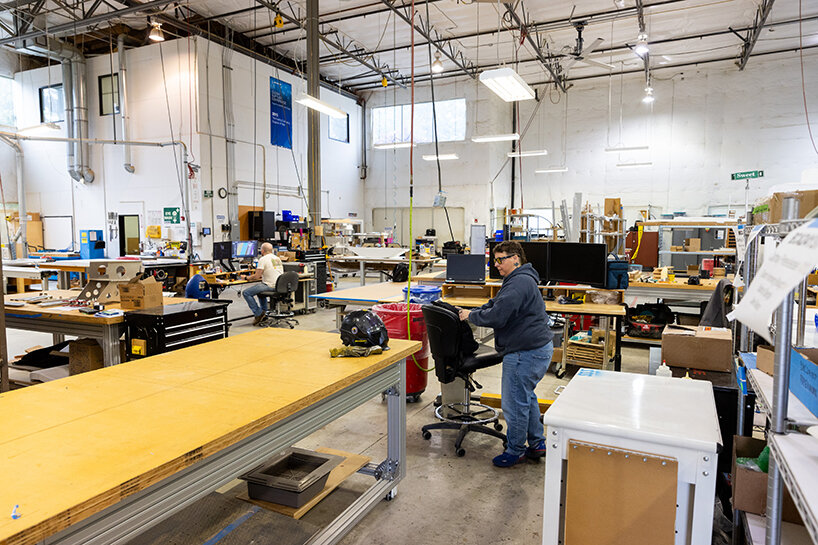
commitment to collaboration and flexibility not only enhances the design outcome, but also cultivates a shared sense of ownership among all participants
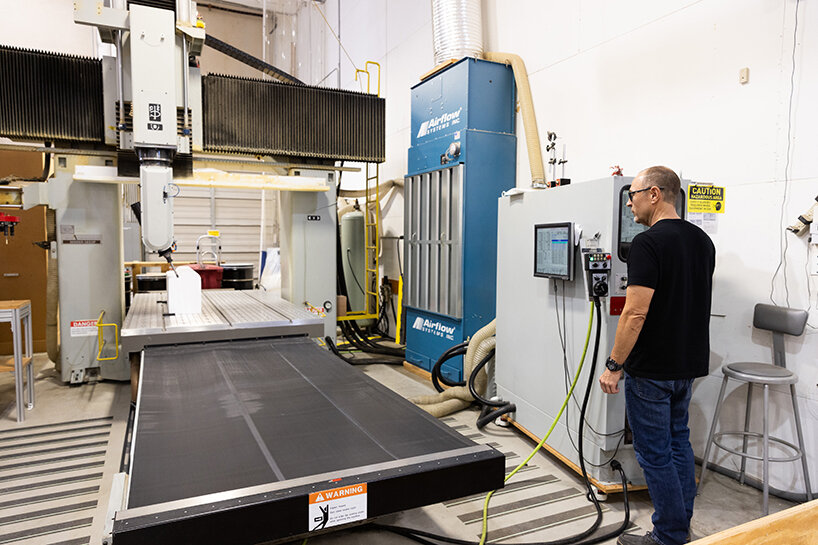
each project and award win is a collective achievement for the team at Teague
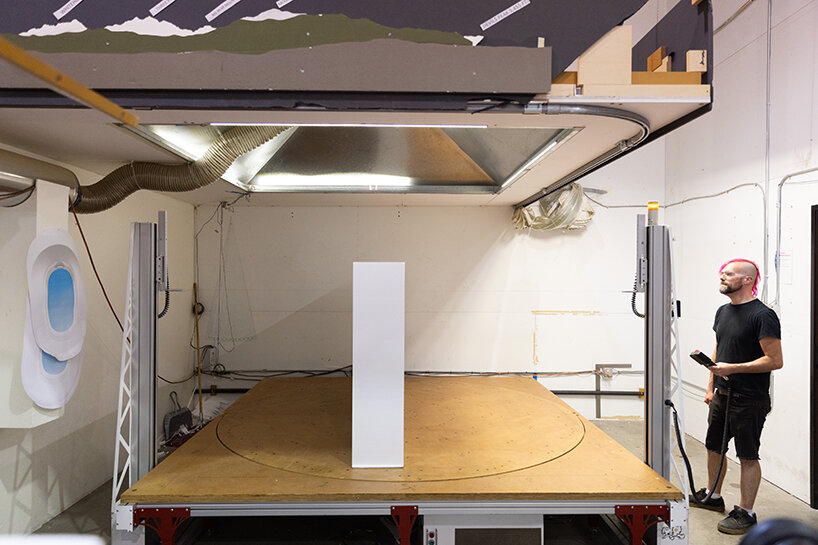
Teague creates prototypes and large-scale mockups at their 27,000 square foot workshop outside Seattle, Washington
